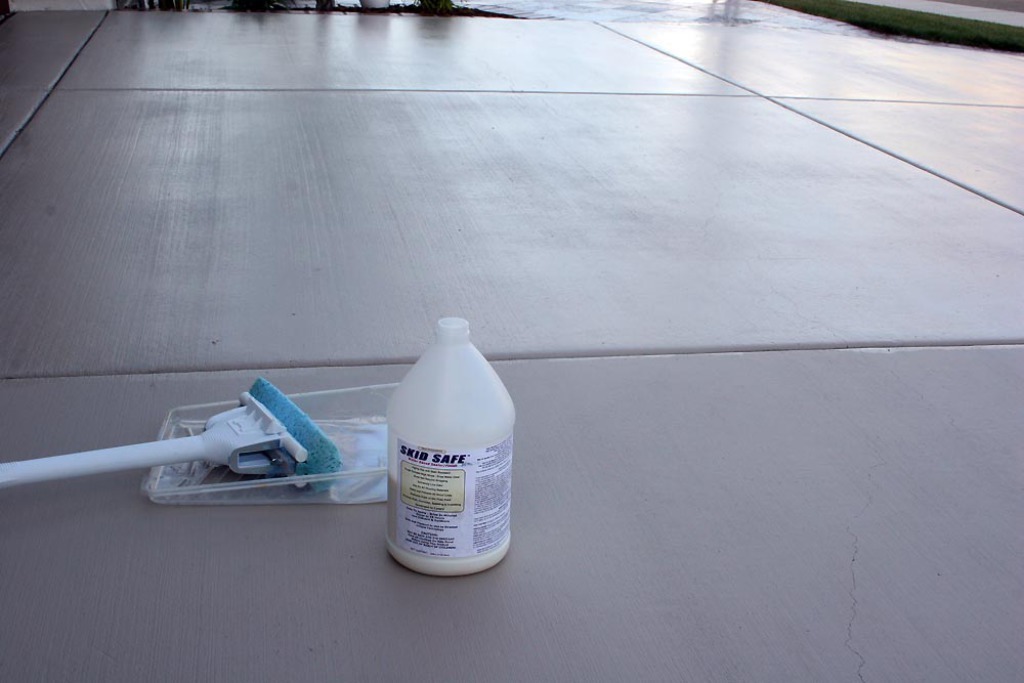
Anti-slip coatings are lifesavers when it comes to preventing accidents on patios, pool decks, walkways, and garage floors. But what happens when those textured surfaces get dirty or moldy? 🦠🧽
You may be tempted to grab your pressure washer and blast the grime away — but hold up! Before you do, it’s important to understand how to safely pressure wash anti-slip coated surfaces without damaging them.
Let’s go step-by-step through what you need to know to clean these tricky surfaces the right way.
🧠 First: What Are Anti-Slip Coatings Made Of?
Anti-slip surfaces are typically coated with materials like:
- Epoxy or polyurethane resins with texture additives (like sand or grit)
- Rubberized non-skid layers
- Silica bead or aggregate-based finishes
- Special paint with traction additives
These materials are designed to withstand foot traffic and weather — but not all of them respond well to high-pressure washing.
⚠️ Risks of Pressure Washing Anti-Slip Coatings
Using too much pressure or the wrong nozzle can:
- Erode or peel the coating
- Dislodge embedded grit or sand particles
- Create uneven texture patches
- Void manufacturer warranties
In some cases, you may even end up making the surface more slippery, which is the exact opposite of what you want.
✅ Best Practices for Pressure Washing Anti-Slip Coated Surfaces
Here’s how to clean them safely and effectively:
1. Use a Low to Medium PSI Setting 🔧
Keep your pressure washer set between 800 and 1500 PSI. If the coating is more delicate (like a painted-on non-slip surface), stay on the lower end.
2. Start with the 40° Nozzle (White Tip)
This nozzle disperses water gently and widely, reducing the risk of surface damage.
💡 Need more cleaning power? Step up to a 25° nozzle, but test on a small area first.
3. Hold the Wand at a Safe Distance
Maintain a distance of 12 to 18 inches to avoid direct abrasion. Get closer only if you’re sure the surface can handle it.
4. Spray at a Shallow Angle ↘️
Don’t aim straight down. Angled spraying helps rinse dirt without blasting texture loose.
🧴 Use Gentle Cleaners, Not Harsh Chemicals
To loosen dirt, mildew, or algae, use:
- Non-bleach, pH-neutral detergents
- Deck-safe or patio-safe cleaning solutions
- Biodegradable cleaners with mold/mildew-fighting properties
Avoid products with strong acids or solvents, as they may break down the coating’s bond or discolor the surface.
Browse Amazon Here For Biodegradable Pressure Washing Detergents
🧽 Scrub Tough Spots by Hand
Pressure washing alone may not lift stubborn grime embedded in textured coatings. Use:
- A soft to medium-bristle brush
- Mild soap
- Circular hand-scrubbing motion
This combo helps lift contaminants from grooves and pits in the coating without risk.
💡 Pro Tip: Let Detergent Dwell
Apply your detergent and let it sit for 5–10 minutes before rinsing. This dwell time helps loosen grime and reduces the need for excessive pressure.
🕑 When Not to Use a Pressure Washer
Skip pressure washing altogether if:
- The anti-slip coating is peeling, cracking, or flaking
- The surface has just been treated or sealed in the last 7 days
- The manufacturer specifically warns against power washing
In those cases, opt for manual cleaning with soft brushes and soapy water.
🧼 Maintenance Tips After Washing
To prolong the life of your anti-slip coating:
- Rinse off pool chemicals, leaves, and mud regularly
- Avoid dragging furniture or grills across the surface
- Reapply sealant or anti-slip coating every 1–3 years, depending on use
🏁 Final Thoughts
Pressure washing surfaces with anti-slip coatings isn’t off-limits — you just have to do it with care. Stick to low pressure, wide-angle nozzles, and gentle cleaning products. A few extra precautions can keep your textured surfaces clean, safe, and looking sharp for years to come. 💪🚿🦶
Browse Amazon Here For Popular Pressure Washers And Accessories






